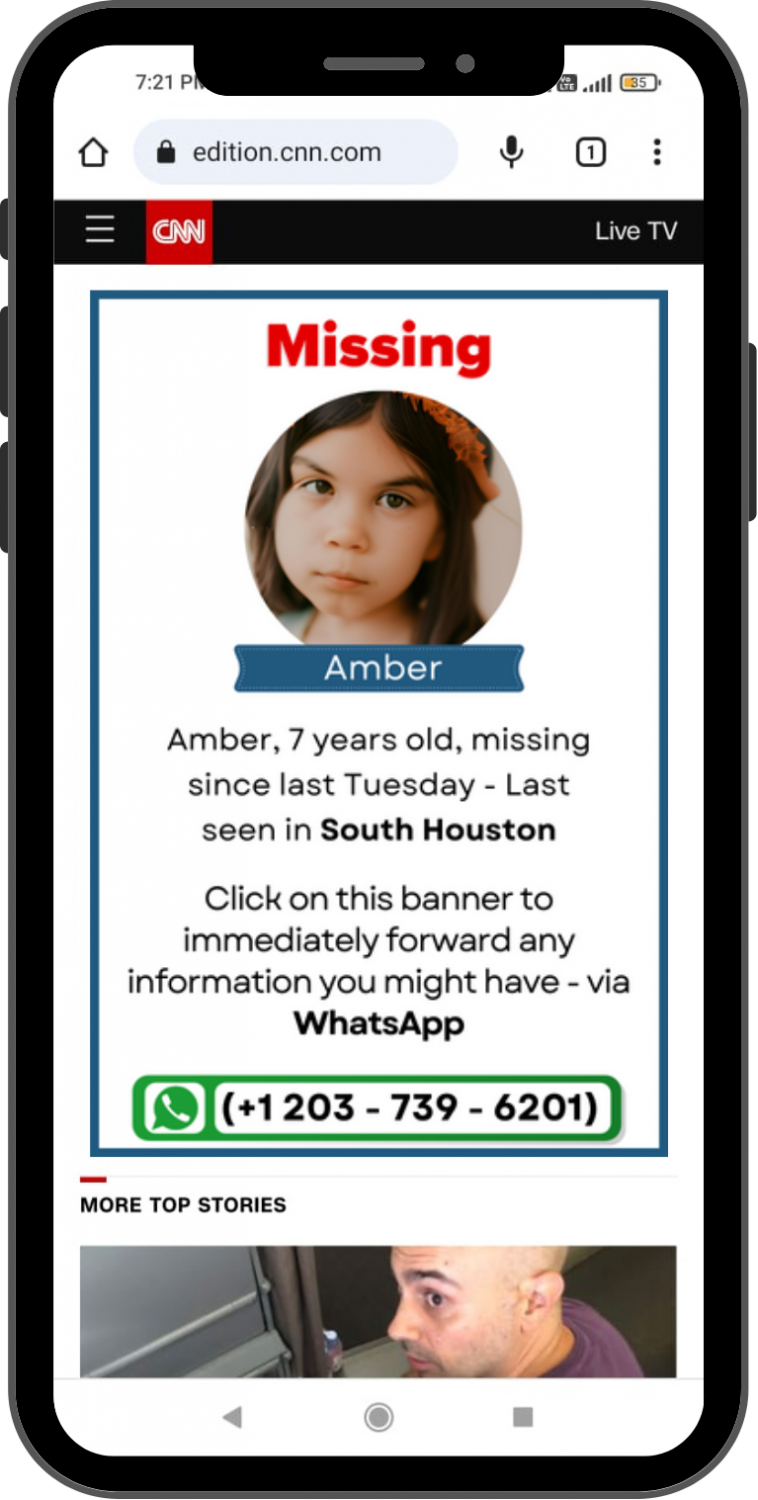
The world is grappling with the pervasive issue of human trafficking and child abduction, a heinous crime that exploits millions of men, women, and children worldwide. Governments, NGOs, and numerous organizations are working tirelessly to combat this modern-day slavery and abuse. In recent years, programmatic advertising has emerged as a powerful tool in raising information and aiding the rescue efforts.
An interview with Isua Botman, CEO of both Targetoo Programmatic Advertising Platform and Anthalon, the latter specifically built for this cause - utilizing programmatic advertising technologies to rescue abducted people/children.
Q: Please explain how programmatic advertising can aid in the rescue of abducted children.
A: Generally speaking, programmatic advertising, powered by artificial intelligence and data-driven algorithms, allows advertisers to automate the process of deploying commercial information in real-time. It enables precise targeting, dynamic optimization, and personalized messaging to reach the right audience at the right time. These attributes make programmatic advertising a valuable ally in the battle against human trafficking. Essentially, it is possible to reach millions of devices/people incredibly cheaply, within hours after an abduction has taken place, anywhere in the world.
Q: How does this work? Please share a detailed explanation.
A: Let's say a girl named Amber appears to be abducted in the city of Houston. After receiving a picture of the girl, Anthalon creates a banner within an hour. The banner is then published (technically termed 'served') on thousands, even millions, of phones in the Houston area. Simply put, people residing in Houston who browse the internet - news, games, sports; anything - will see a banner in between the content they are consuming. Technically, the banner can be served on any website or app that allows advertisements.
The banner can include a click-to-WhatsApp protocol. This means that when somebody clicks on the banner, they are directly forwarded to their WhatsApp interface - including a pre-configured number where information can be sent. All of this happens within 2 hours of receiving the picture.
Q: You say 'cheaply,' please clarify.
A: When a banner is served (or 'seen'), it is technically called an 'impression.' A well-connected programmatic advertising platform can achieve 1000 impressions for less than 1 dollar. This means that no more than $1000 is needed to expose a million individual people to the banner. This is unbeatable when compared to the cost per impression of traditional print, radio, or TV. Not to mention the speed of deployment.
Q: What else can be done, besides reaching millions of people in an apparent cheap and urgent manner?
A: A lot! For example, once information is received, sub-campaigns can be launched targeting very specific locations. These locations can be as precise as 100 yards. It is also possible to analyze which devices have been witnessed in the area where the abduction took place and track their travel patterns. Furthermore, it is possible to track which devices have clicked on the banner, and this data can be correlated with additional tracking patterns. A lot is possible. The main idea is that information about a crime can be shared cheaply with millions of people within hours of the crime being committed, allowing people to easily forward information with one click.
Additional information:
Programmatic Advertising platforms enable their users (for example, law enforcement entities) to cheaply deploy information virtually anywhere in the world. It doesn't matter if this information needs to be published in Helsinki or Washington DC, in Germany or South Korea. If a person, located in an area of interest (configured in the campaign), accesses the internet and engages in their usual online behavior (such as browsing news sites/apps, playing a game, or checking the weather), information can be served. Simply put, global internet usage is interconnected, and programmatic advertising techniques can leverage this fact. This makes it an ideal tool for law enforcement and the intelligence community, regardless of the cause. Cheaply reaching millions of people and encouraging them to share relevant information brings a completely new angle to fighting crime.
ⓒ 2025 TECHTIMES.com All rights reserved. Do not reproduce without permission.




